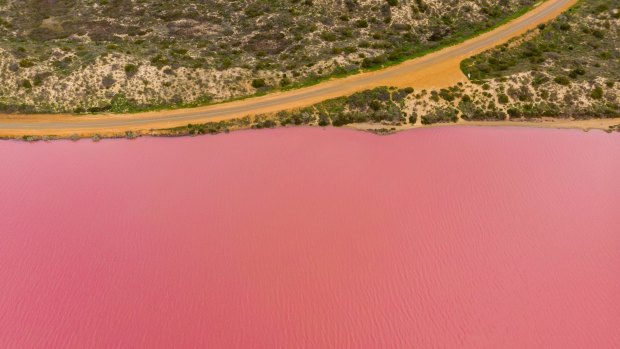
Hutt Lagoon, Western Australia.Credit: Tourism Western Australia
PINK LAKE, WA
Pink Lake (properly known as Hutt Lagoon) at Port Gregory in Western Australia is a mind-bending sight if you time it right. The lake is sometimes pink, pale purple or red depending on the season, time of day and rise and fall of the water's salinity. It's also an eye-popping contrast to the sapphire blue of the Indian Ocean across the sand dunes. See westernaustralia.com
BURNING MOUNTAIN, NSW
Mt Wingen, a smouldering coal seam in the Upper Hunter Valley north of Sydney, has been sending up smoke from 30 metres underground for 6000 years. The emerging smoke shifts a metre a year, affects the surrounding vegetation, and leaves scorched earth stained black, white and red. A faint sulphurous smell adds to the hellish scene. You can see it on a four-kilometre national parks trail. See nationalparks.nsw.gov.au
HORIZONTAL FALLS, WA
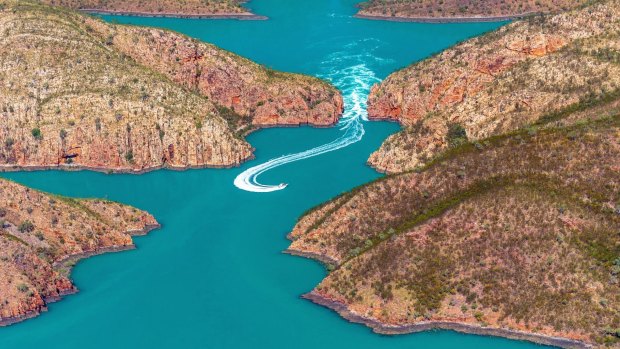
Credit: Tourism Western Australia
Only an expedition cruise ship or seaplane gets you to Talbot Bay in the Kimberley. When its gigantic 10-metre tides rush through a narrow break in the bay's escarpment – once a day in each direction – powerful currents give the impression of horizontal waterfalls. Visitors can plunge through the tight gap in the rust-red cliffs on bumpy Zodiac rides that envelop them in spray. See australiasnorthwest.com
See also: Australia's weirdest natural wonder, according to Attenborough
GIANT SINKHOLE, SA
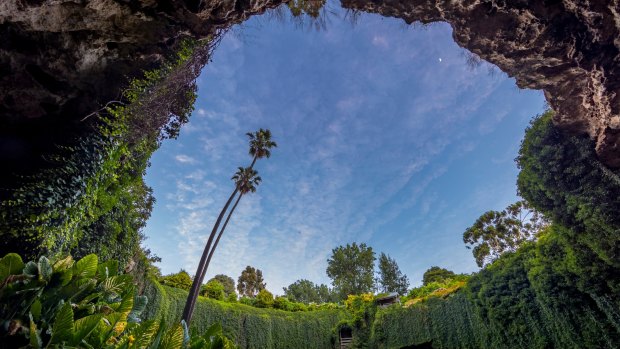
Credit: Michael Ellem/SATC
South Australia's Limestone Coast, which runs from the Victorian border, is pockmarked with sinkholes (or cenotes) created by collapsed caves. The most wonderful is Umpherston Sinkhole for its size and vegetation-draped sides, and because you can walk into its base, which is planted with gardens. The adventurous can snorkel in the clear waters of Kilsby Sinkhole or explore Hell's Hole, popular with cave divers. See discovermountgambier.com.au
SEA PILLARS, TASMANIA
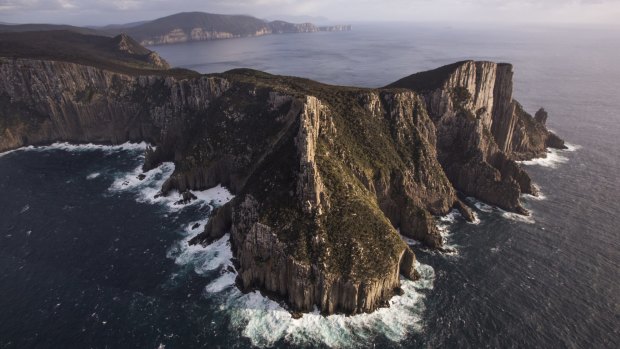
Credit: Tourism Tasmania
The southern hemisphere's tallest sea cliffs rise 300 metres from the foaming ocean at Cape Pillar off the Tasman Peninsula. Between waves and winds, the rock climbing is strictly for experts, and even if you just want to admire the cliffs you'll need to tackle a rugged bushwalk. It's worth it for spectacular views of Tasmania's plunging edges and ranks of slender hexagonal pillars that look like organ pipes. See parks.tas.gov.au
LAVA TUBES, QUEENSLAND
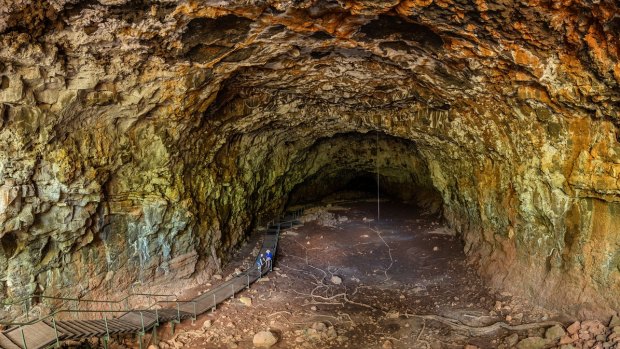
Credit: Undara Experience
Over 160 ancient, worn-down volcanoes pepper Undara Volcanic National Park 255 kilometres southwest of Cairns in the Queensland outback. But what lies beneath is even more remarkable. Massive caves and some of the world's longest lava tubes create vast, echoing and eerie spaces filled with bats and peculiar underground insects. In places where the rock ceilings have collapsed, patches of rainforest flourish. See tropicalnorthqueensland.org.au
SKULL ROCK, Victoria
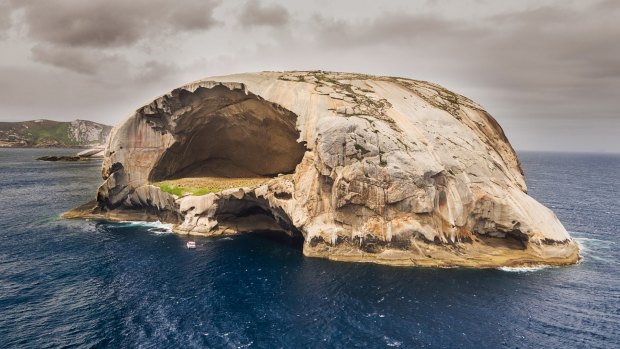
Credit: Pennicott Wilderness Journeys
Officially known as Cleft Island, this giant weathered dome of rock off Wilsons Promontory in Victoria is hollowed out on one side and, from certain angles, looks like a half-submerged skull. Few people have landed, but recently a cruise-tour from Tidal River has started heading out into the notoriously rough seas to view Skull Island up close and admire its colonies of fur seals and birds. See visitgippsland.com.au
See also: A visit to Australia's mysterious, gigantic 'Skull Rock' is not for the faint-hearted
BALANCED BOULDERS, NT
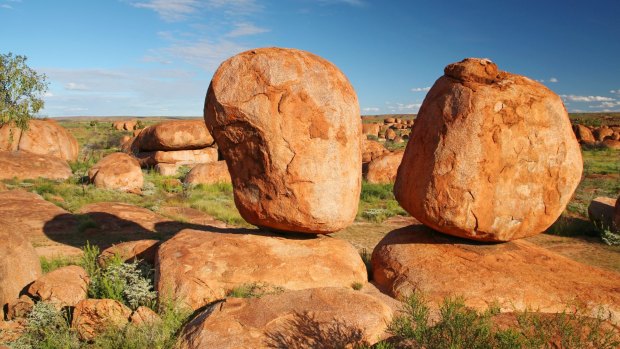
Credit: iStock
Karlu Karlu or the Devil's Marbles near Wauchope in the Northern Territory is an indigenous sacred site, and it isn't hard to see why. These massive egg-shaped boulders stand out in a flat landscape, some balanced seemingly precariously, others split in half as if by a mighty hatchet. At sunrise and sunset, they glow red against a tawny landscape studded with spindly bloodwood trees. See northernterritory.com
BIOLUMINESCENT BAY, NSW
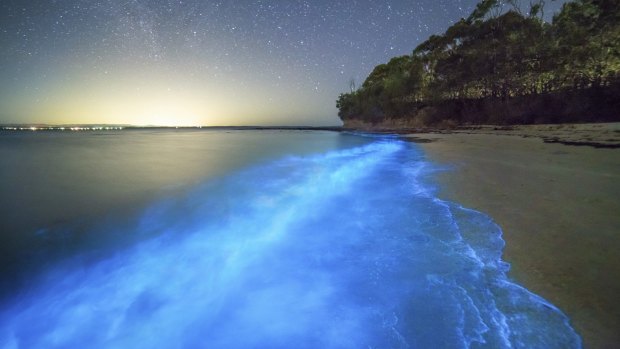
Credit: Destination NSW
Jervis Bay is a popular seaside retreat three hours south of Sydney whose generous bay is best known for white sand and whale watching. But after dark, another wonder presents itself as bioluminescent algae give the water's edges of vivid blue glow. The unpredictable bioluminescence tends to be more common in spring and summer after rain, and is best seen late at night. See jervisbaytourism.com.au
WAVE ROCK, WA
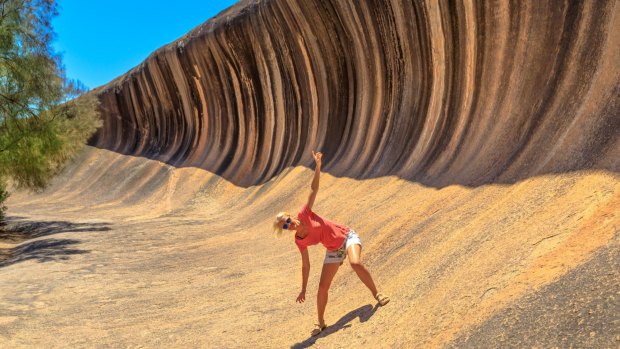
Credit: iStock
This dramatic rock feature near Hyden in Western Australia was the result of water erosion far below the surface. When the hard granite was subsequently exposed, it left what looks like a giant fossilised wave streaked with rusty iron deposits and black algae. It isn't the only peculiar rock formation in this region east of Perth: check out The Humps, Mulka's Cave and the Hippo's Yawn too. See australiasgoldenoutback.com
Sign up for the Traveller Deals newsletter
Get exclusive travel deals delivered straight to your inbox. Sign up now.